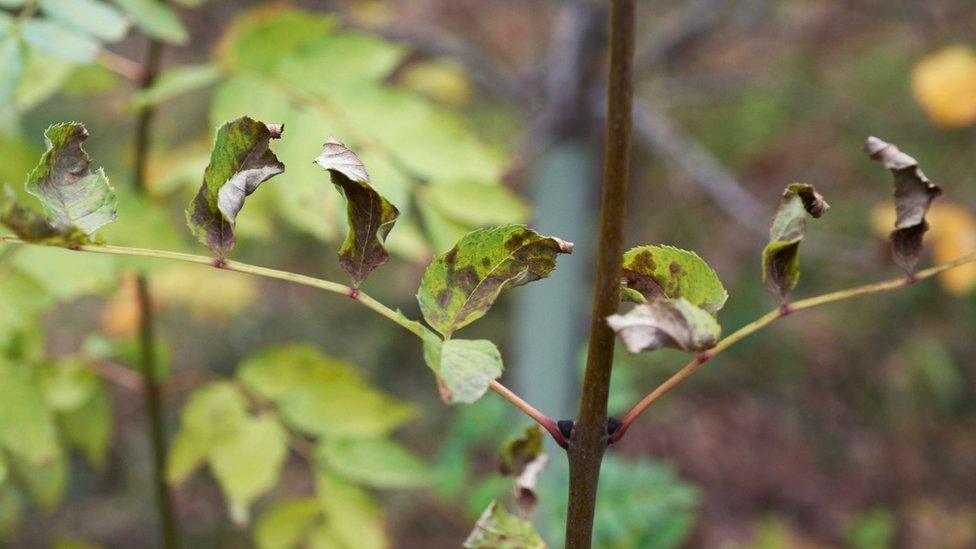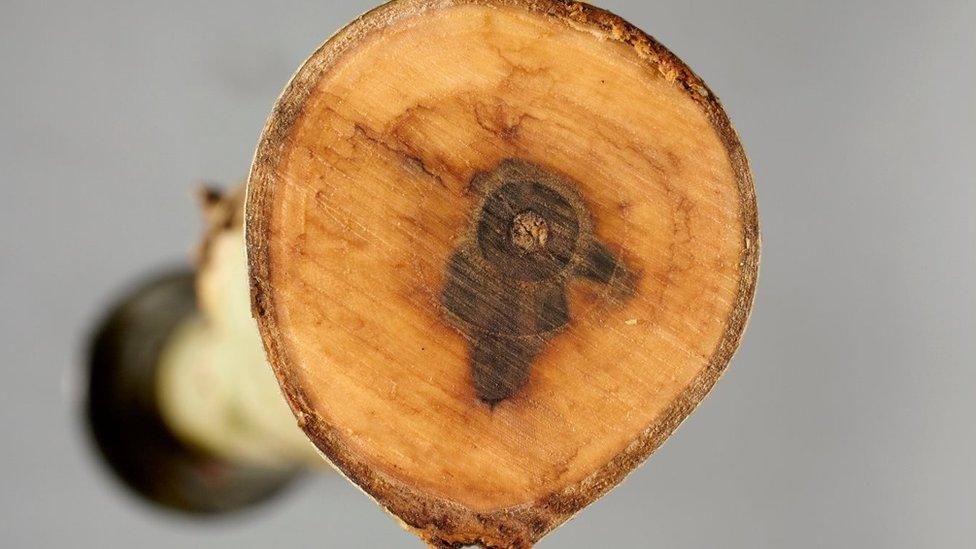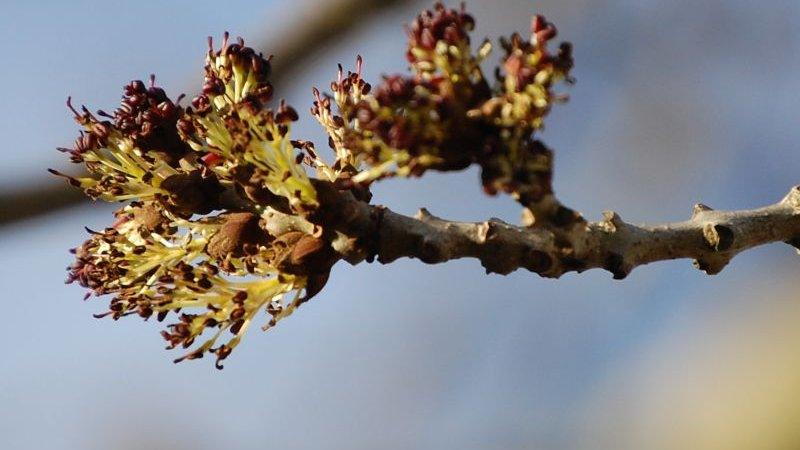New hope for trees affected by ash dieback
- Published

Ash dieback has devastated trees across Europe
Scientists say there is new hope in the fight against a disease that is devastating ash trees.
A study, external has identified the genes that give trees resistance to ash dieback, which arrived in the UK in 2012 and has now spread to almost every part of the country.
The discovery suggests that trees could now be bred that are unaffected by the epidemic.
The research is published in the journal Nature Ecology and Evolution, external.
Prof Richard Buggs, from the Royal Botanic Gardens Kew, said: "I hope this work will lead to us safeguarding ash populations for future generations."
How does ash dieback develop?
Ash dieback is caused by the fungus Hymenoscyphus fraxineus, which originated in Asia.
In its native range, it causes little damage to trees, but when the fungus was introduced to Europe about 30 years ago, it caused widespread destruction.
Recent estimates suggest that the disease can kill up to 70% of ash trees.
In the UK, this means 70 million trees could be lost, which would cost the economy £15bn, according to an analysis published this year, external.
In a bid to halt this seemingly unstoppable disease, scientists have been studying the DNA of hundreds of ash trees.
A small number of trees are showing some natural resistance to ash dieback - and the researchers have identified the parts of their genome that are helping this fightback.
"We've discovered about 3,000 locations in the DNA of these ash trees that are contributing to the resistance," explained Prof Buggs.

Scientists now hope they can breed a tree that can withstand the fungus
Knowing this will help the team to monitor how quickly ash trees are evolving a tolerance to the fungus in the natural environment, but is also crucial for any future breeding programmes.
Prof Buggs said: "We hope to bring together all of the genetic differences that are contributing to resistance into a single population of ash trees that will have higher resistance than any of the ash trees that we currently have."

Scientists are also collecting and storing seeds from different tree species
He added that this will not save the trees that are currently dying, but if this project is successful, it could mean they could eventually be replaced and ash could live on in the countryside.
But ash is not the only tree that is in trouble.
So alongside this study, a team from Kew has also been collecting seeds of 70 woodland species.
Since 2013, some 15 million seeds have been amassed as part of the UK National Tree Seed Project. They are now stored at -20C at the Millennium Seed Bank in Wakehurst.
Dr Alice Hudson said: "We don't know what's around the corner for our woodlands. There are threats from climate change, from plant health, from pests and diseases, and from land-use change… but banking the seeds here, we have them out of the environment, they are away from the threats - and they are a back-up."
Follow Rebecca on Twitter., external
- Published6 May 2019
